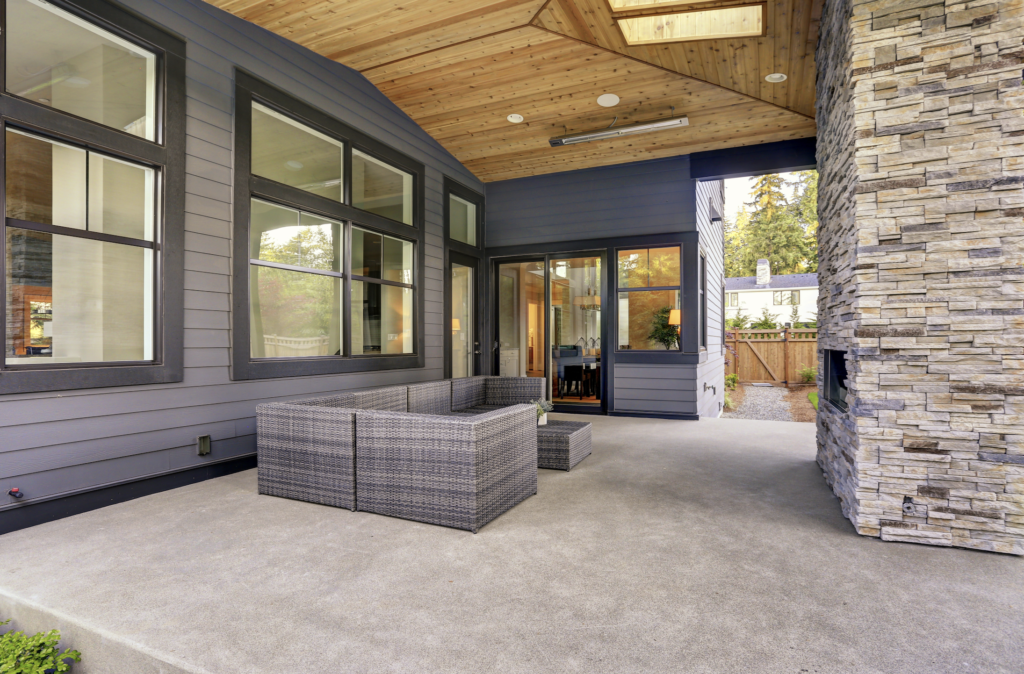
Many homeowners wonder if they can revive their worn-out concrete surfaces with a fresh layer of protection. The good news is that applying sealer to existing concrete is not only possible but often one of the most cost-effective ways to extend its lifespan and improve its appearance.
Why Seal Old Concrete?
Over time, concrete naturally deteriorates from exposure to weather, chemicals, and daily wear. Sealing creates a protective barrier that prevents water penetration, reduces staining, and can significantly extend the surface’s life by 10-15 years. This approach typically costs 80-90% less than concrete replacement while delivering substantial improvements in both durability and aesthetics.
Factors to Consider Before Applying a Concrete Sealer

Existing Sealer Type
Before applying any new product, you must identify what’s already on the surface. Look for these telltale signs:
- Glossy or shiny finish: Indicates a topical sealer (acrylic, epoxy, or polyurethane)
- Natural appearance: Suggests a penetrating sealer or no sealer at all
- Water test: Drop water on the surface—if it beads up, a topical coating is present
Different sealer types have varying compatibility requirements. Applying an incompatible product can result in peeling, discoloration, or complete adhesion failure.
Surface Condition Assessment
Examine your concrete carefully for damage that could compromise the sealing process. Minor hairline cracks are normal and can be sealed over, but larger cracks (wider than 1/8 inch), spalling, or structural damage should be repaired first. Also check for oil stains, efflorescence (white chalky deposits), or previous coating failures that require special attention.
Step-by-Step Preparation Process
Deep Cleaning
Start with thorough pressure washing using 2,500-3,000 PSI to remove dirt, debris, and loose material. For oil stains, apply a degreasing agent and scrub with a stiff brush before rinsing. Allow the surface to dry completely—this typically takes 24-48 hours depending on weather conditions and concrete porosity.
Removing Old Sealer (If Necessary)
If you discovered an incompatible existing sealer, removal is essential. Chemical strippers work well for acrylic sealers, while mechanical grinding may be needed for epoxy coatings. This step adds time and cost but prevents future problems.
Repairs and Final Prep
Fill cracks larger than 1/8 inch with concrete crack filler, following manufacturer instructions for mixing and application. For spalled areas, use a concrete patching compound. Once repairs cure (usually 24 hours), perform a final cleaning to remove any dust or debris.
Moisture Testing
Never seal damp concrete. Use a moisture meter or tape plastic sheets to several areas overnight—condensation underneath indicates the surface needs more drying time.

Choose the Right Sealer for Your Situation
Penetrating Sealers
Best for: Driveways, sidewalks, and areas where you want to maintain the natural concrete appearance.
Advantages: Deep protection, won’t peel or wear off, allows concrete to breathe.
Coverage: Typically 200-400 square feet per gallon.
Lifespan: 5-10 years before reapplication needed.
Film-Forming Sealers (Acrylic)
Best for: Decorative concrete, patios, pool decks where enhanced appearance is desired.
Advantages: Enhances color, provides stain resistance, more affordable option.
Coverage: 250-400 square feet per gallon.
Lifespan: 2-5 years before reapplication needed.
High-Performance Sealers (Epoxy/Polyurethane)
Best for: Garage floors, high-traffic areas, surfaces exposed to chemicals.
Advantages: Superior durability, excellent stain and chemical resistance.
Coverage: 200-300 square feet per gallon.
Lifespan: 7-15 years before reapplication needed.
Application Process and Safety
Weather and Timing
Apply sealer when temperatures are between 50-80°F with low humidity and no rain expected for 24-48 hours. Early morning or late afternoon applications often provide ideal conditions.
Safety Precautions
Work in well-ventilated areas and wear appropriate protective equipment:
- N95 respirator mask for solvent-based sealers
- Chemical-resistant gloves
- Safety glasses
- Non-slip footwear
Application Technique
Use a pump sprayer or roller for even coverage, working in manageable 4×4 foot sections. Apply thin, uniform coats rather than trying to build thickness in a single application. Most sealers require 4-6 hours between coats, with full cure taking 24-72 hours depending on the product.
Long-Term Maintenance and Troubleshooting
Maintenance Schedule
Penetrating sealers: Reapply every 5-10 years
Acrylic sealers: Reapply every 2-5 years
High-performance sealers: Reapply every 7-15 years
Regular cleaning with mild detergent extends sealer life significantly.
Common Problems and Solutions
White haze or clouding: Usually caused by applying sealer to damp concrete or in high humidity. May require stripping and reapplication.
Peeling or flaking: Indicates poor surface preparation or incompatible products. Strip the failed sealer and start over with proper prep.
Uneven appearance: Often results from inconsistent application. Light sanding between coats can help achieve uniformity.
When to Call Professionals
Consider professional application for:
- Large areas (over 1,000 square feet)
- Severely damaged concrete requiring extensive repairs
- High-value decorative surfaces
- Situations requiring specialized equipment or expertise
Cost Considerations
DIY Material Costs:
- Penetrating sealer: $0.25-0.50 per square foot
- Acrylic sealer: $0.15-0.35 per square foot
- High-performance sealer: $0.75-1.25 per square foot
Professional Installation:
Typically 2-3 times material cost, but includes surface preparation, repairs, and warranty coverage.
Conclusion
Sealing old concrete is a smart and cost-effective way to restore durability, enhance appearance, and protect against future damage. By properly preparing the surface, choosing the right sealer, and applying it correctly, you can extend the life of aging concrete and keep it looking like new for years to come.
Consider PolyTECT—a high-quality concrete sealer designed to preserve the beauty and integrity of your paved areas and stone surfaces. Whether you’re reviving a weathered driveway or patio, PolyTECT ensures long-lasting performance with minimal maintenance.
Don’t let worn-out concrete diminish your property’s appeal. With the right preparation and a premium sealer, you can easily restore and protect your concrete surfaces, keeping them strong and attractive for the long haul.


